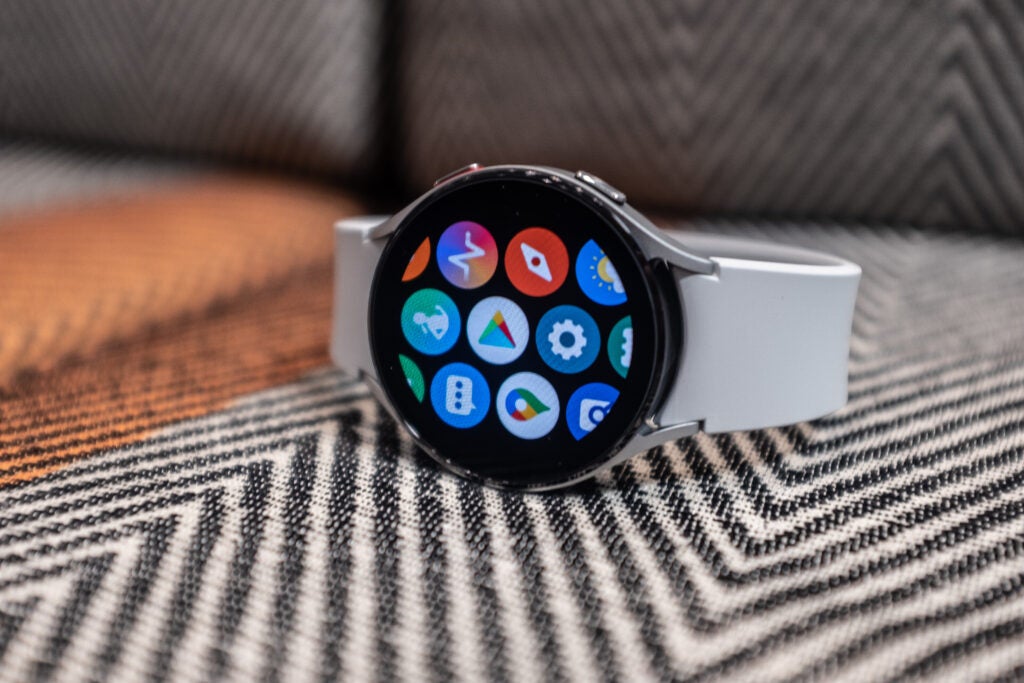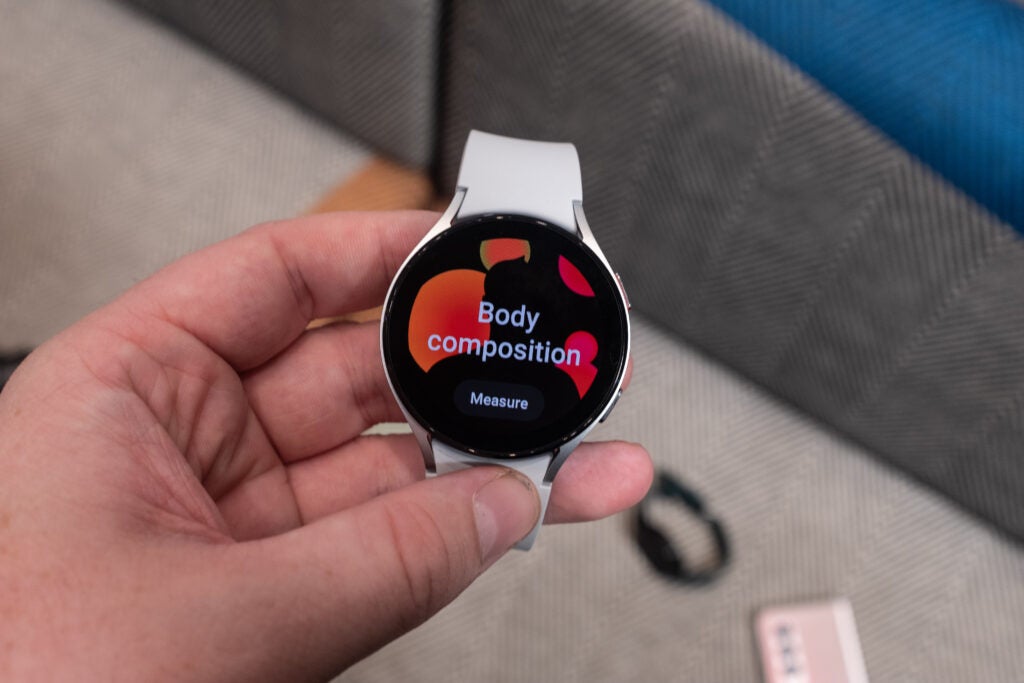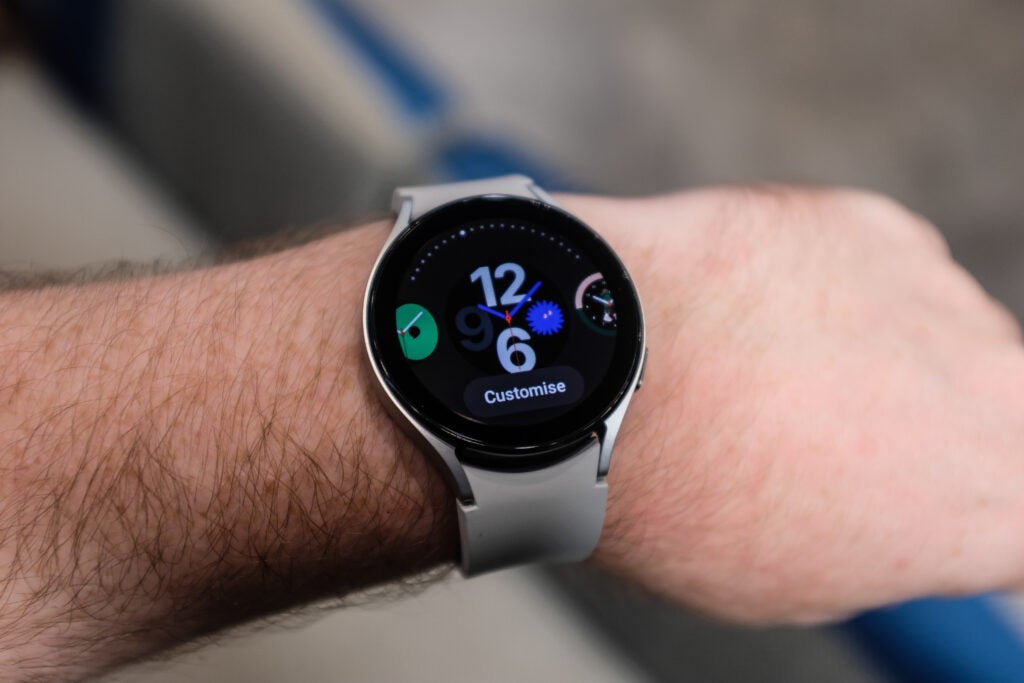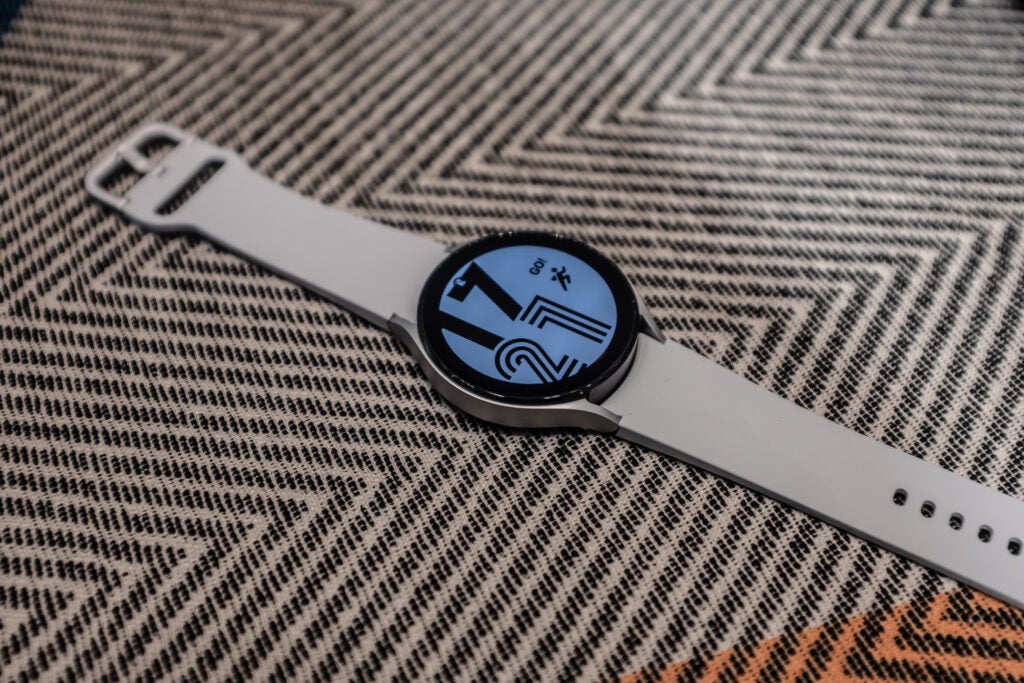Hands on: Samsung Galaxy Watch 4 Review
First Impressions
The Galaxy Watch 4 has the parts required to be the best smartwatch around, from a great selection of sensors to wide app support and plenty of nice watch faces. I haven’t been able to use the new version Wear OS long enough yet to make a complete judgement but I am eager to see whether this is finally the wearable software that Android-compatible watches have been waiting for.
Availability
- UKRRP: £249
Key Features
- First smartwatch to use the new Wear OS
- Body composition tracking
- 4G options available for untethered use
Introduction
The Samsung Galaxy Watch 4 is a big deal. This is the first smartwatch to come with the new version of Wear OS that Google announced it was building in partnership with Samsung at Google I/O a few months ago.
Coming in two versions that vary mostly due to design, the Galaxy Watch 4 and Watch 4 Classic are the latest smartwatches aiming to create an ecosystem as good as the Apple Watch 6.
With new software, a bunch of clever health sensors and proven methods of navigation can the Galaxy Watch 4 finally make a great smartwatch for Android users?
Price and release date
Here are all the pricing details for the Watch 4 and Watch 4 Classic:
Galaxy Watch 4 Prices
- 40mm (Bluetooth): £249
- 40mm (4G): £289
- 44mm (Bluetooth): £269
- 44mm (4G): £309
Galaxy Watch 4 Classic
- 42mm (Bluetooth): £349
- 42mm (4G): £389
- 46mm (Bluetooth): £369
- 46mm (4G): £406
They’ll both be available from August 27.

Software and Wear OS
I spent about an hour with the new Galaxy Watch 4 during a hands-on event organised by Samsung and while it was enough time to get a brief overview of the new Wear OS, I’m eager to really spend much longer with it and see how different it actually is.
Probably the biggest user-facing difference is the integration between Samsung services and those from Google. Google services weren’t present on Tizen (the software Samsung’s watch used before) but they’re out in force here: YouTube Music, Google Assistant (apparently this is coming later in the year), Maps and Pay.
Having Google Pay is a big deal for me, as my bank remains unsupported by Samsung Pay. Google Maps is great to have too; letting you navigate around without pulling out your phone.
In terms of apps, you’ve got access to the Google Play Store and if you install an app on your phone then the watch version will automatically download too. A good example of this is Spotify, which supports offline playback if you connect up a pair of wireless earbuds. The watch can also pull down settings from a connected phone (alarms, time zones) so everything feels a lot more in sync than it did before.

The overall UI feels very much like the Wear OS and Tizen mash-up that it is. You can scroll through a number of homescreens each focussed on a different bit of information, like the weather or fitness. There’s also a more traditional app grid that’s accessed with a swipe up and a settings panel that’s activated with a swipe down. It took me a little bit of time to work out where things were – the settings, for example – but I am sure it’ll become more natural after continued use.
While the new version of Wear OS will run on a lot of upcoming wearables, this is very much Samsung’s version. Just as you’d find the brand’s One UI skin on a Samsung Galaxy S21, this watch has the very same One UI overlay. If Google was to launch the long-awaited Pixel Watch later this year then it would likely look very different.
If you’ve got an older Samsung wearable running Tizen then sadly you won’t see it updated to this new Wear OS software.
Design
There are two versions of the Galaxy Watch 4. The standard Galaxy Watch 4 and a pricier Classic version. I played around with both during my hands-on time and came away preferring the minimalist look of the Watch 4 over its flashier sibling.

The Watch 4 comes in either a 40mm or a 44m size and there are a number of colour options available for the strap, including green, black and pink. It’s a minimal looking watch with a circular face and digital bezel surrounding it for navigation. Two buttons sit on the side – although there’s no crown, something you’ll find on an Apple Watch.
The Classic edition comes in 42 and 46mm sizes with either a black or silver stainless steel face and a number of strap options. The biggest difference here is the physical rotating bezel that gives nice tactile feedback when scrolling through menus. This rotating bezel does add some extra bulk, but both versions of the Watch 4 are slim and light and feel nice to wear.
Performance and sensors
While the designs of the two watches are very different, internally they’re the same. Samsung told me battery life across the models sits at roughly 40 hours and they each have all the same sensors tucked inside. You’ll find 4G options of both too if you want a watch that can run independently of your phone.
Powering the Galaxy Watch 4 is a new 5nm Exynos chipset that Samsung claims is 20% faster in terms of CPU and 10% faster in the GPU. There’s also 1.5GB RAM and 16GB storage. I didn’t spend enough time with the wearable to really make a judgement on performance yet, but it does feel snappy and responsive.

Like just about every other smartwatch out there, the Galaxy Watch 4 focuses a lot of its energy on health and fitness features. Inside there’s what Samsung is calling a BioActive sensor, this comprises an optical heart rate, electrical heart and Bioelectrical Impedance Analysis (BIA) for blood pressure, blood oxygen and heart monitoring. A new ‘Body Composition’ tool looks at your BMI, skeletal muscle, fat mass and other metrics to give you an all-around look at your vitals. I also particularly like the introduction of snoring alerts and the improvements Samsung has made to sleep tracking, something that still doesn’t work that well on competing watches.
Usual stalwarts like GPS, accelerometers and a barometer are also here. The watch is 5ATM rated so can be worn while swimming. Charging is done via an included wireless puck or any Qi charger.
There’s a lot going on here and I couldn’t actually take the watch out for a run during the short demo so I am very much in the dark as to how good these sensors are and how accurate the data is. We’ll be putting it through plenty of tests ahead of the full review though.
Early verdict
This is, for me, the most exciting product coming out of the August Unpacked Samsung event.
The Galaxy Watch 4 has the parts required to be the best smartwatch around, from a great selection of sensors to wide app support and plenty of nice watch faces. I haven’t been able to use the new version Wear OS long enough yet to make a complete judgement but I am eager to see whether this is finally the wearable software that Android-compatible watches have been waiting for.
